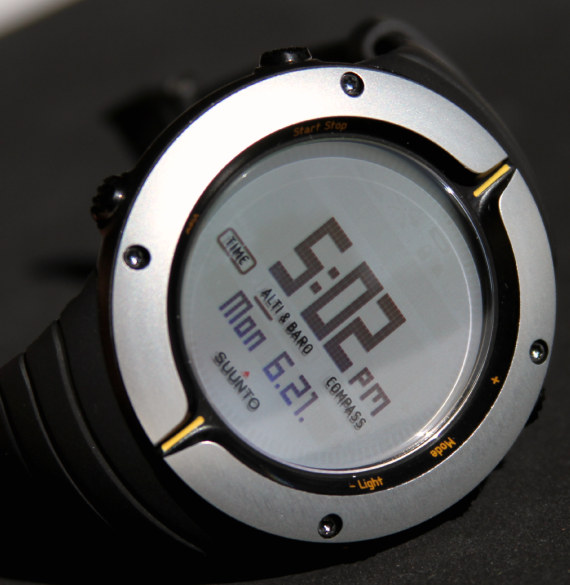
A few years ago Suunto first released the Core. It was to be a stylish, highly variable in design, multi-sensor watch for everyone. The concept seemed to combine everything people likes about Sunnto and multi-sensor watches together. The Core was an immediate hit, but like all complex computerized item, it has some issues. People complained about battery life, durability, etc… Like many other watch brands with similar watches, and similar problems Suunto got to work on fixing these issues. Now, several years later, the Suunto Core is fitted with a much better movement. Here is the relatively new Suunto Core Extreme Edition Silver. It is a limited edition version of the Core, with a look that reminds brand lovers of their popular big dive computer timepieces.
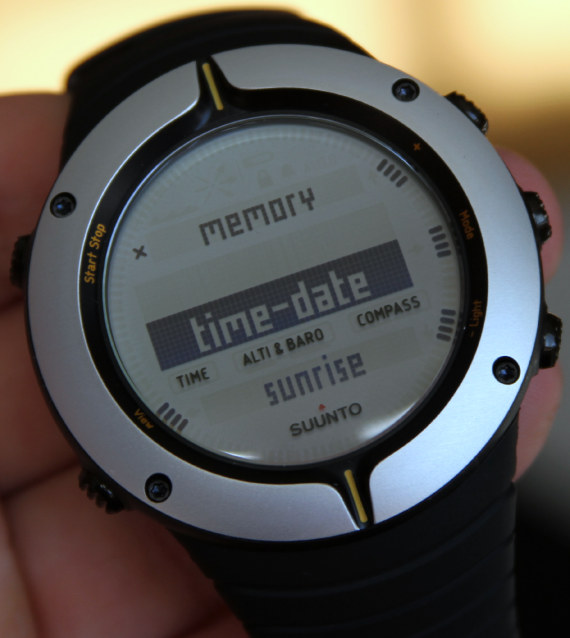
Suunto set up a decent website to showcase the features of the Core here. It doesn’t let you interact with the watch completely, but there are a few “lessons” that show you what the watch does (in a nutshell) and how to do it. In fact, probably my biggest gripe with Suunto products is the documentation. They come with relatively large manuals, but once you open then, you realize that they are so big because they are in like 30 languages. The actual substance in the guide is limited. I think they want you to go online to learn more. They should make that more clear. Also, if you are “in the field” and need a quick reference, you most likely aren’t going to have any way of getting online to check things out. But like I said, in addition to the interactive website, there are PDF versions of the guides you can download – which I recommend you do if you get any Suunto watch.
The Core watch itself is pretty sweet, and if you are at all a tech savvy person, orienting yourself on how to use most of the features is pretty straight forward. Half of the user experience is easy and logical, but there are some things that require some digging. For example, you can’t easy see altimeter and barometer information. You need to go into a menu and choose which of the two you prefer to have easy access to. Suunto has been doing that for years, and I am not really sure why. Other similar watches don’t require that. The menus are pretty nice actually. So even if the key features of the watch aren’t all as easy to access as on a Casio (for example), the menus are a lot easier to use than on a Casio. Suunto does a good job at allowing you to work with the watch. One thing they do is have visual indicators on the LCD screen near the buttons that are available while in any given more or menu. That way you don’t need to hunt as much for “what to do next.” While not perfect, I give the Suunto Core user interface system relatively high marks.
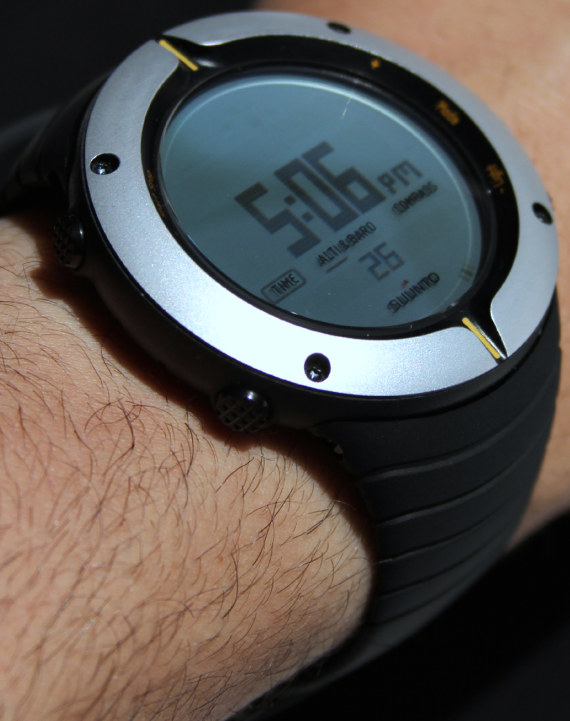
Looking at the dial in the default view, you have the time, permanent visuals for the sensor mode selection (with a digital circle around the selected one), as well as a variable information strip below. Being the most important piece of information, the time is large and easy to read on the decently pixelated LCD screen. The strip below the time and mode selection indicator can be used to display a few piece of information (or even to be blank for a cleaner look on the dial). Here you can see the date, the seconds (there is also a small seconds indication marker much of the time around the periphery of the dial), second timezone, sunrise/sunset data (which pulls info from a predefined location and the calendar), the stopwatch, or the countdown timer. In other modes, this strip is used for other information (such as the temperature in altimeter or barometer mode). This little level of dial customization is nice. Some people might not like the “side burner” approach to key features such as the stopwatch or countdown timer, but I didn’t mind at all.
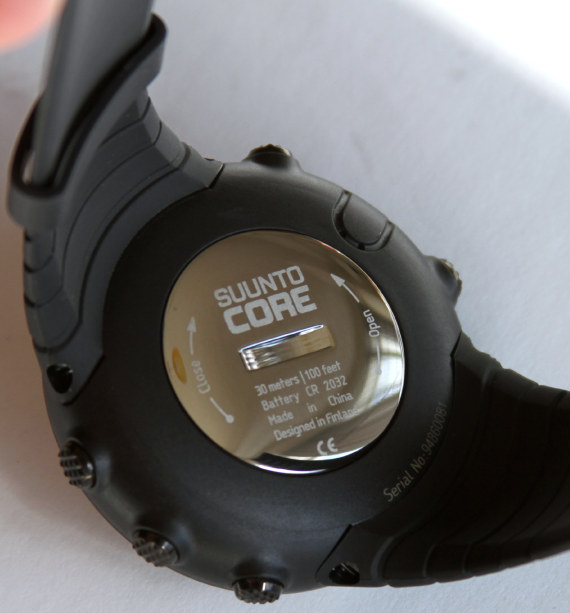
All the Core features are listed below, but in a nutshell it does a few major things. It has the time, calendar, alarm, second timezone, stopwatch (chronograph), countdown timer, sunrise and sunset times, altimeter (with graphical log), barometer (with log for weather prediction data), compass, and a depth meter. Some of these functions are easier to use than others, but you can safely use all of them without too much worry about complexity. The latter feature, the depth meter is sort of funny. It uses the pressure sensor for the altimeter and barometer for this. But please note that this is not a diving watch. Suunto has some awesome diving computer, but the Suunto Core is for light diving only. With water resistant of only 30 meters, it isn’t recommended that you dive more than 10 meters with the watch (about 33 feet). So while it is a cool feature to have, most snorkelers for example, don’t really need this information, and you can’t use the Core for more serious diving duty. I just sort of see it as a fun additional feature, thrown into the mix by Suunto’s engineers.
If the style of the Extreme Edition Silver model doesn’t suit you, then there are plenty more to choose from. In accordance with Suunto ideas, the basic watch case is quite large at about 50mm wide. There are different bezel, case style, color, and strap options, as I am sure you will notice if looking around at the various available Core pieces. Although it is large, the case is comfy thanks to the light weight and straps that wrap around nicely. The straps are all well-made using high quality resins (basically plastic). Usually nicer than when Casio offers, and often more stylish as well. The buckle on the clasp is metal, which means it is more durable, and it has a secure fit. One issue is that when you put the watch on, the excess strap doesn’t always go into the strap loop easily given the friction. Not a bit deal though, but it makes the watch just a bit harder to put on and take off. This isn’t an issue with all the straps I assume.
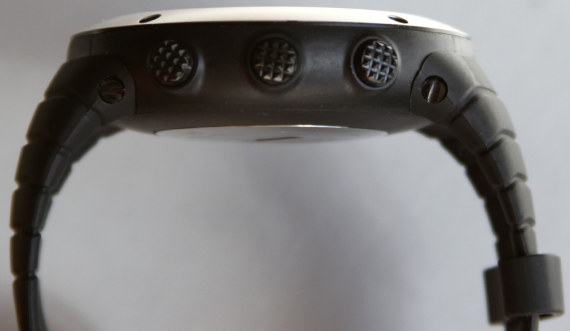
Suunto has always provided a very easy to open (using a coin) battery replacement compartment. The batteries they uses are often available at a local drug store, being basic CR2032 cells. So you don’t need to hunt around for the right battery when it runs out. I imagine the battery will last for a year or two. The crystal is inset a bit from the bezel to protect it. I believe it is made from some high grade acrylic. Those looking for Sunnto watches with sapphire crystals and higher end metal cases should opt for a Suunto Elementum watch (that I reviewed here and here). What I really want is for Suunto to design a high end Elementum style watch with the movement (or similar) from the Core.
The Suunto Core is a totally viable everyday watch for someone who likes something large, active looking, and digital on their wrist. I like it as an activity watch. I’ve traveled with it, taken it into the woods, biked around with it, and been overall satisfied. The back light works pretty well for seeing the time in the dark, and the information that is available at your finger tips is useful. Lots of watches have functions like this, but the Core is pretty adept at making them accessible after figuring out the basics of how to use the watch. I have no problem recommending the Core to people looking for a good quality multi-sensor watch for basic use. More serious explorers, divers, etc… might opt for something a bit better suited to specific functions given their needs, but the Core is a good well-rounded watch with a robust feature set. The Suunto Core Extreme Edition Silver limited model is priced at $329, while the overall Core collection retails from about $250 – $500 depending on the style. www.suunto.com
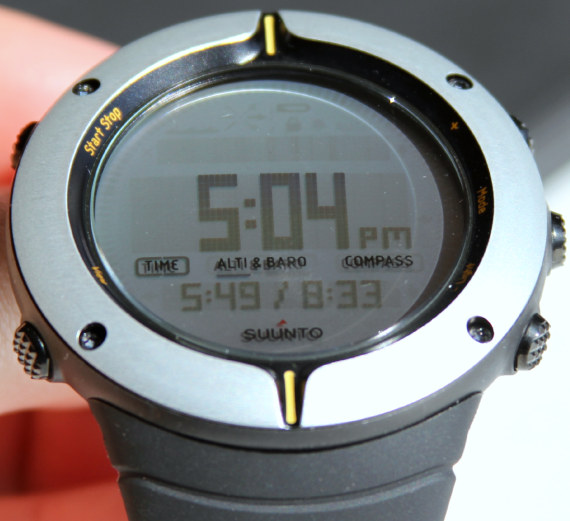
List of Core features from Suunto:
Altimeter
Real-time vertical cumulative value
Temperature compensation
Total Ascent Descent
User-removable logbook files
Automatic Alti/Baro switch
Automatic 7 day Alti-Baro memory
Resolution – 1 m
Recording intervals -1s, 5s, 30s, 60s
Altimeter/barometer lock
Altitude range -500m – 9000m/-1600ft – 29500ft
Difference measurement
Log graph
Logbook function
Lockable logs
Chronograph
Countdown timer
Stopwatch
Compass
North-South indicator – North indicator
Guided calibration
Heading in degrees
Declination setting
Cardinal directions
Bearing tracking
Other
Operating temperature -20°C – +60°C/-5°F – +140°F
User replaceable straps
Water resistance 30m/100ft with uw buttons
Storage temperature -30°C – +60°C/-22°F – +140°F
Selectable metric/imperial units
Mineral crystal glass
Menu-based user interface
Dot-matrix display
Backlight type – Electro-luminescent Display
Backlight option for night use
Weight -64 g
Power
Low battery warning
User replaceable battery
Special
Languages 4 language menu (DE,EN,ES,FR)
Depth meter
Button lock
Rotating bezel
Watch
12/24h
Sunrise sunset times
Calendar clock
Dual time
Daily alarms – 1
Alarm Snooze
Weather
Temperature resolution 1°C/1°F
Weather memory 7 days
Trend indicator
Trend graph
Temperature range -20°C – +60°C/-5°F – +140°F
Altimeter/barometer lock
Temperature
Sea level pressure
Difference measurement
Barometer resolution 0,05 inHg/1 mbar
Barometer range 8,9 -32,4 inHg/300-1100 mbar
Weather alarm
Storm alarm

